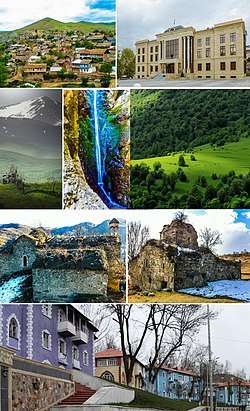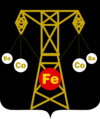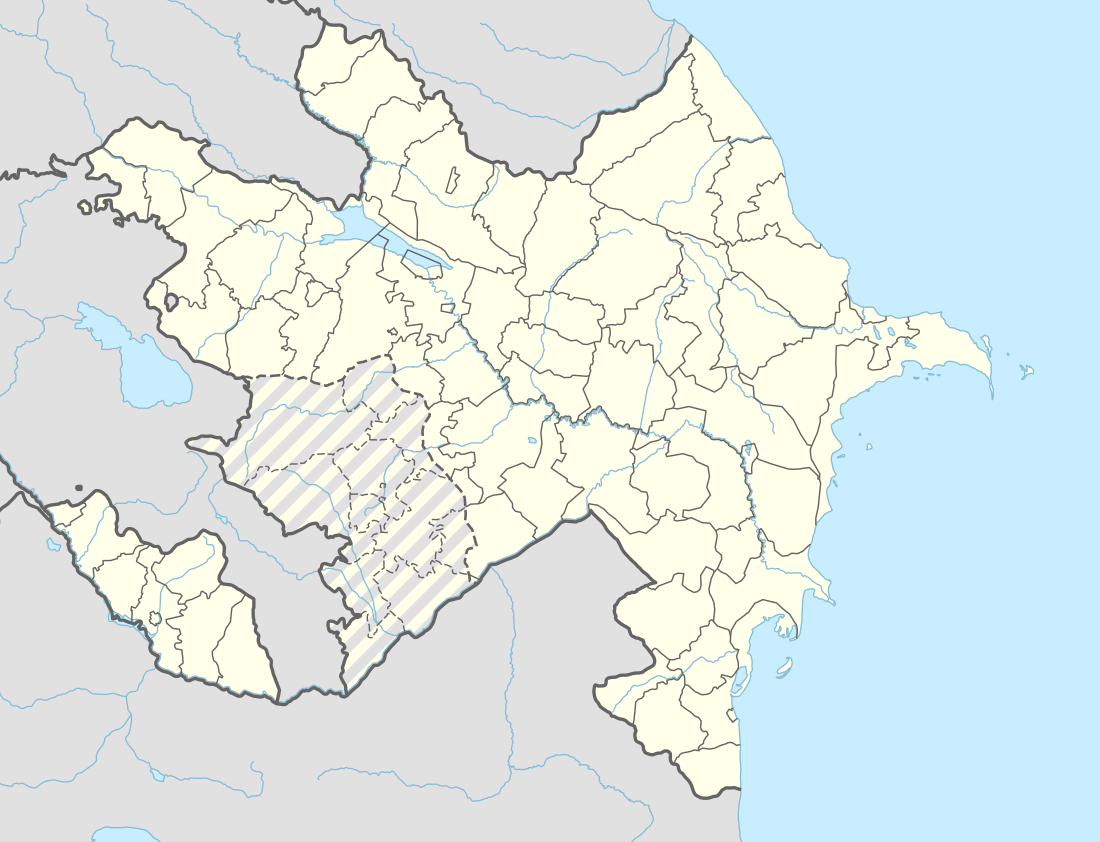Daşkəsən
Daşkəsən (transliterated, Dashkasan, Dashkesan) is a city and municipality in and the capital of the Dashkasan Rayon of modern Azerbaijan. It has a population of 10 801. The municipality consists of the city of Daşkəsən and the village of Alunitdağ.[2]
- For the administrative district, see Dashkasan Rayon; for the settlement and municipality also called Daşkəsən, see Daşkəsən (settlement); for the village in Jabrayil Rayon, see Daşgəsən; for the place in Zanjan Province of Iran , see Dashkasan.
Daşkəsən | |
|---|---|
City & Municipality | |
 | |
 Seal | |
 Daşkəsən | |
| Coordinates: 40°29′41″N 46°04′38″E | |
| Country | |
| Rayon | Dashkasan |
| Founded | 1948 |
| Elevation | 1,630 m (5,350 ft) |
| Population (2010)[1] | |
| • Total | 11,262 |
| Time zone | UTC+4 (AZT) |
| • Summer (DST) | UTC+5 (AZT) |
| Area code(s) | +994 216 |
Etymology
The city's name means Rock Cutter in Azerbaijani, in which Azerbaijani daş means stone and kəsən is rooted in the verb kəsmək, "to cut", thus referring to a place where rocks have been hacked.[3] [4]
History
The mountains of Daşkəsən were used as pastures for a long time. The most beautiful pastures of the South Caucasus are located here and in Khoshbulag. Khoshbulag was inhabited by the primitive people in the Stone Age whose main engagement was hunting. In the 3rd century B.C. people engaged in animal breeding rose to Khoshbulag pastures. The tradition is followed up today. Daşkəsən summer pastures are 2000 m high from sea level. Different animal-breeding tribes settled here and built Cyclops-like small towers to protect themselves from attacks. Since that period Daşkəsən turned to the place of settlement.
Tumuli type burying monuments found in the archaeological digs carried out in 1959–1960 in the places of ancient settlement in Daşkəsən show that people used this area as summer pastures and there was only one way to those pastures in summer- north-east, the valley of the river Kur.
The Middle Ages in Daşkəsən are characterized with the development of cultural work.
The Dashkesan was founded after World War II[5] due to mining of iron ore deposits[6]. It began to form on the basis of a temporary settlement of builders and a small mining settlement that arose during the period of preparation for the development of the richest iron ore deposits of industrial importance.[7] In 1948 it received city status.[6]
The region Daşkəsən is very rich in natural resources. In the period of the Soviet Union the so-called strategic products of the region, i.e., ironstone, aluminum, cobalt, marble and others were actively exploited.
Many of the buildings in present-day Daşkəsən were constructed by German POWs during the aftermath of World War II. Workers that died during the city's construction are buried in a German cemetery alongside the road between Daşkəsən and Gəncə.
Geography
.jpg)
Demographics
Economy
Culture
Transport
Education
Notable residents
See also
Gallery
References
- The state statistical committee of the Azerbaijan Republic Archived November 14, 2010, at the Wayback Machine
- "Belediyye Informasiya Sistemi" (in Azerbaijani). Archived from the original on September 24, 2008.
- Ministry of Culture and Tourism of Azerbaijan:Dashkesen city
- Maria Adelaide Lala Comneno, Pablo Cuneo, Setrag Manoukian. Gharabagh. OEMME Edizioni, 1988, p. 56.
- Azerbaijan // The Grove Encyclopedia of Islamic Art and Architecture / Edited by Jonathan M. Bloom and Sheila Blair. — Oxford University Press, 2009. — Vol. II. — ISBN 9780195309911. P. 239.
After 1945 architects turned to planning the new industrial towns of Sumgait, Dashkasan and Mingachevir and to reconstruction the old towns of Nakhchyvan, Gandja, Khankandi and Shusha...
- Azerbaijan Soviet Encyclopedia, vol. IV. P. 351.
- Эфендизаде Р. М. Архитектура Советского Азербайджана. — Стройиздат, 1986. — С. 124. — 316 с.
.jpg)
.svg.png)